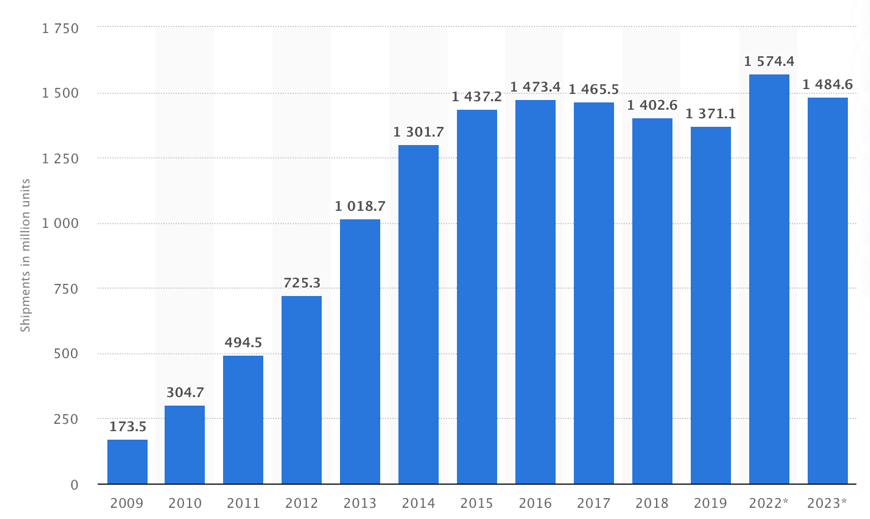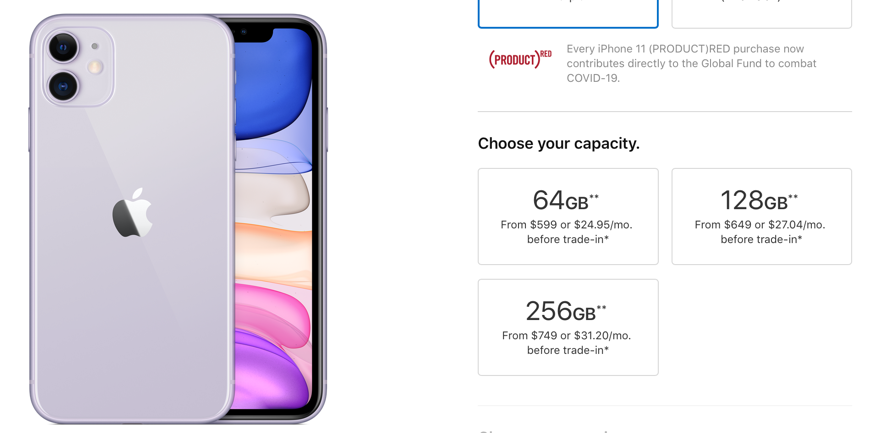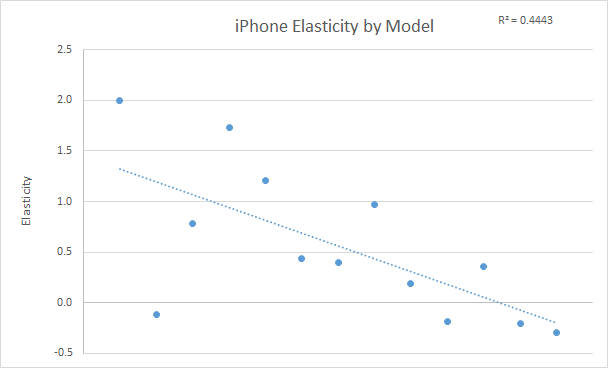An extensive academic study of the structure of the subject market is fundamental to the successful mastery of economic theories and concepts relevant to the industry. Critical market analysis is expected to allow the student not only to summarize current knowledge but also to examine a particular product in more depth and with an open mind. It is then appropriate to note that such a written analysis is a relevant strategy for examining the economic forces of the macro and microenvironment that drive product development. In this essay, such a product was chosen to be Apple’s well-known line of phones, namely iPhones. Without focusing on a particular device, but instead looking at the dynamics of pricing and demand for the entire current lineup, it is appropriate to distinguish the patterns driving the market. It has been shown that demand for a given product is not a function of price, which means that it can be concluded that it is inelastic. This essay aims to critically analyze the selected product in the context of the industry technology market.
Of primary importance is a more substantive analysis of the representation of the iPhones line of smartphones in today’s technology market industry. The best strategy for examining this issue is to examine statistical documents to identify common patterns. For example, it has been shown that the smartphone market is a dynamic system for which there is no stability between quarters (CounterPoint, 2021). In more detail, while Apple’s share of smartphones was 14% by the beginning of 2018, by the end of 2020, that number had risen to 21%. From this, it can be concluded that the iPhone has high strength in the industry sector of the market, and the current business strategies of the conglomerate allow the company to strengthen its position stronger. The improvement in this indicator is a consequence of a successful reputation management strategy. For example, Apple is the traditional leader in terms of iPhone user satisfaction (Shapo, 2020). At the same time, it can be said that the market segment as a whole is intensifying — and therefore, Apple, with its current resources, is improving its leadership representation — as there has been a practical linear growth in global product shipments over the past twelve years, as shown in Figure 1. Based on the available data, it can be argued that iPhones are popular communication devices, finding interest and trust among consumers.

It is necessary to be objective to recognize that the high representation in the emerging smartphone market is not yet enough proof of the high demand for the devices. Competitors such as Samsung, Xiaomi, or Nokia are also trendy in the market, but these numbers are too different from what Apple has when considered individually. By the fourth quarter of 2020, the share of iPhones in the sector for the first time took an extremely outperforming nature, surpassing the second competitor, Samsung, by 131 percent (CounterPoint, 2021). This makes sure of the high popularity of the devices among competitors but does not answer the question about the elasticity of demand. In fact, understanding the high demands and expectations of customers, Apple management is aimed at the formation of such business policy, which would allow intensifying its own influence. Every year, the brand updates its smartphone lineup, releasing three to six new devices simultaneously within one generation. At the same time, the classic sales scheme consists of removing previous models from sales but maintaining representation in the budget and medium price segment. Thus, as of the second quarter of 2021, among the current iPhone models available for sale are iPhone 12/12 Pro, iPhone SE, iPhone 11, iPhone XR (Figure 2). As a consequence, buyers have a choice of several devices that suit them in terms of technology and price factors.

In this context, it is fair to note an exciting pricing policy of the company. With the release of new models, the cost of older models naturally decreases by several tens of percent. In more detail, the iPhone 11 at the time of its release — September 2019 — was $699 for the most minimal package, but a year later, this price was drastically reduced by fifteen percent, to $599 (Figure 4). Similar strategies are noticeable for other, older models, and therefore it is appropriate to summarize Apple’s pricing policy in general: in the hope of attracting more users, the company reduces the price tag on older models when updating the line.


However, it cannot be unequivocally stated that Apple is generally correct in its strategies, as an intriguing connection has been found between the reduction of the cost of the product and the demand for it. Kamesh has been shown that as the device lineup is updated (hence the reduced prices of older models), the elasticity of demand gradually decreases (Kamesh, 2018). Figure 5 is the result of measuring sales trends for specific company devices over time. Its interpretation gives the idea that the recent decrease in the price of iPhones is associated with a decrease in the elasticity of demand: as a consequence, the buyer finds themselves less sensitive to price changes, which means that the rate of change in price and demand are disproportionate. In other words, reducing the price tag on older models does not lead to the anticipated increase in demand for the product.

Theoretically, the inelasticity of demand for iPhones has few favorable consequences for Apple. When the price of such a product decreases but there is no increase in demand, it leads to an overall drop in profits over the reporting period. The traditional technique for inhibiting such effects is to recommend that product prices not be reduced. Nevertheless, such a strategy is not relevant for Apple, which has a unique brand. It is worth saying that with seemingly inelastic demand, the firm reports overall record sales almost every quarter, as shown in Figure 6. From this, it can be assumed that consumers do not feel the need to cut the price because they initially have little interest in buying an old device when new models come out. The smartphone market has created such an agenda that it is deeply ingrained in the minds of consumers about the short-term moral relevance of the device: the iPhone 12 bought in 2020 will no longer be cost-effective in 2021 with the next generation coming out, even if the specifications make the device highly effective until 2025. As a consequence, consumers are not willing to respond to price cuts because they want to keep their devices relevant. This is Apple’s unique user philosophy, raising issues such as social prestige, status, and customer reputation.

In conclusion, it should be noted that Apple not only maintains but also improves its leadership position in the global smartphone market. Through effective business management strategies and brand appeal, the company manages to maintain high demand for the devices. At the same time, following trends in the technological market, Apple annually updates the line of iPhones, releasing new generations, technically and visually more advanced. Simultaneously, the cost of older devices is naturally decreasing: for the iPhone 11 one year after its release, the cost has dropped by one hundred dollars. It has been measured that demand for the product at the reduced price does not increase, which means that demand for iPhones can be seen as inelastic.
References
Apple. (2019). September event 2019 — Apple [Video]. Web.
Apple. (2021). Blast past fast. Apple. Web.
Apple. (2021). Buy iPhone 11. Apple. Web.
CounterPoint. (2021). Global smartphone shipments market share[PDF document]. Web.
Kamesh. (2018). Demand elasticity of iPhones. Medium. Web.
O’Dea, S. (202). Global smartphone shipments forecast from 2010 to 2023. Statista. Web.
Shapo, A. (2020). How customer feedback surveys help Apple maintains industry leadership. MyFeelBack. Web.
Vailshery, L. S. (2021).Apple’s revenue worldwide 2004-2020. Statista. Web.